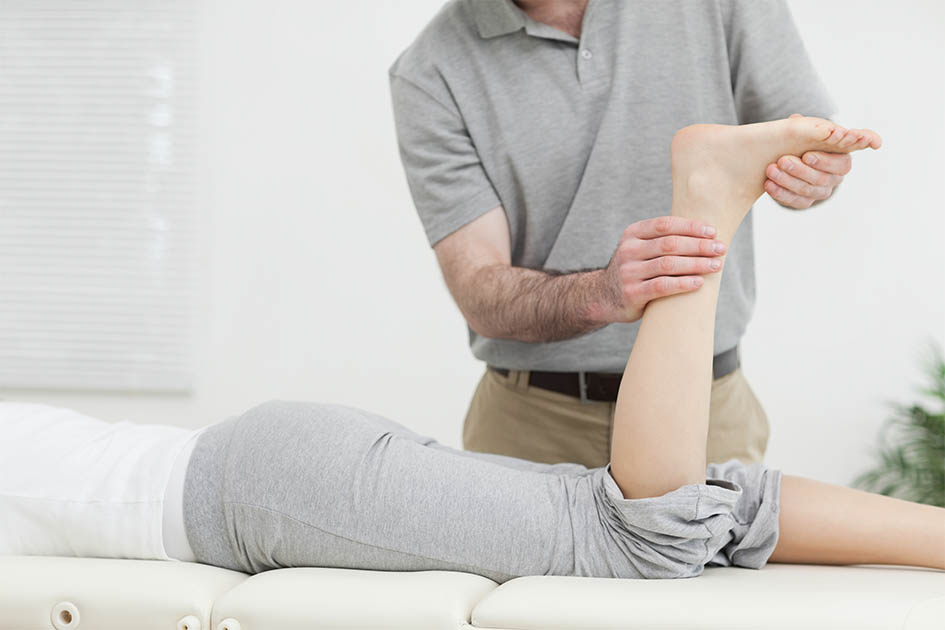The Achilles tendon is the strongest tendon in the body. It attaches the calf muscle to the heel bone (calcaneus). These structures help you go onto your tiptoes. Achilles tendinopathy is an overuse injury that occurs when the tendon cannot adapt to the strain being placed upon it. Excessive strain to the tendon leads to repeated micro-damage within the tendon fibres, with the tendon trying to heal itself in response to the strain. There are three proposed stages of tendinopathy based on the changes and distribution of disorganisation within the tendon:
- Reactive tendinopathy (no pain during activity, increased pain after activity and subsides following rest)
- Tendon disrepair (pain takes longer to subside following aggravating activities)
- Degenerative tendinopathy (pain worsens with use and may be constant)
Signs and Symptoms
The most common symptoms of Achilles tendinopathy are:
- morning stiffness (which often eases after a few minutes of walking)
- tenderness over the Achilles tendon (there may also be a nodule or audible clicking with ankle movement)
- variable pain (which settles during exercise but may increase on recommencement of activity after rest)
Recovery Process
Recovery time is 3-6 months depending on the stage of tendinopathy. Most people have improved movement and reduced pain within a 12-week period, however, others will take longer. Everyone’s recovery is different and influenced by multiple factors.
Risk Factors
| General Risks | Common Training Errors |
|---|---|
| >30 years of age | Increasing running distance too quickly |
| Tight and/or weak calf muscles | Excessive running mileage |
| Poor endurance of calf muscles | Excessive running intensity |
| Poor core stability around the hip/knee | Low variation in training |
| Stiff joints in the foot | Old or poor-quality footwear |
| Increased weight | Excessive hill running |
| Diabetes | Inadequate rest/ recovery time |
Assessment
Achilles tendinopathy can usually be diagnosed by your physiotherapist with examination alone, scans may not be necessary. If imaging is necessary, an ultrasound or MRI is likely to be used. Examination may include assessing your walking pattern, the flexibility of the ankle joint, the strength/endurance/flexibility of your calf muscles and questionnaires to assess the impact of the pain on your day-to-day life.
Recommended Treatment
Ice – applying ice helps reduce pain (20 minutes, 4x / day or after exercise)
Simple painkillers – paracetamol or anti-inflammatories
Relative rest – avoid running and maintain fitness with low-tendon loading exercise such as swimming, cycling, rowing, weight training, Pilates or running in water
Massage and Manual Techniques – to reduce tightness in the surrounding muscles and joints
Other treatments options – orthotics, heel lifts, PRP injections, surgery for severe/chronic problems only
It has been shown that strength training can help reduce tendon pain and improve tendon loading tolerance. It is recommended that you begin a daily strengthening and stretching program tailored to suit the current level of your pain and symptoms. Remember, you need to be patient and persist with your exercise program as it takes 3 to 6 months to significantly improve your symptoms.
Further Resources
Achilles Tendinopathy: Advice and Management. Oxford University Hospitals (NHS Foundation Trust). https://www.ouh.nhs.uk/patient-guide/leaflets/files/11924Ptendinopathy.pdf
Achilles Tendinopathy: Physiopedia. https://www.ouh.nhs.uk/patient-guide/leaflets/files/11924Ptendinopathy.pdf

